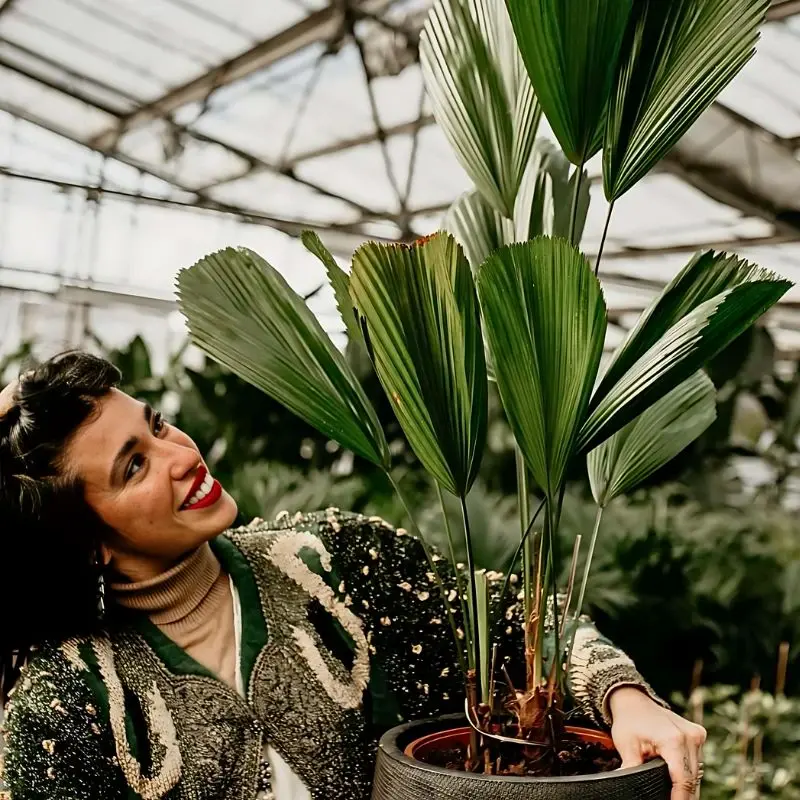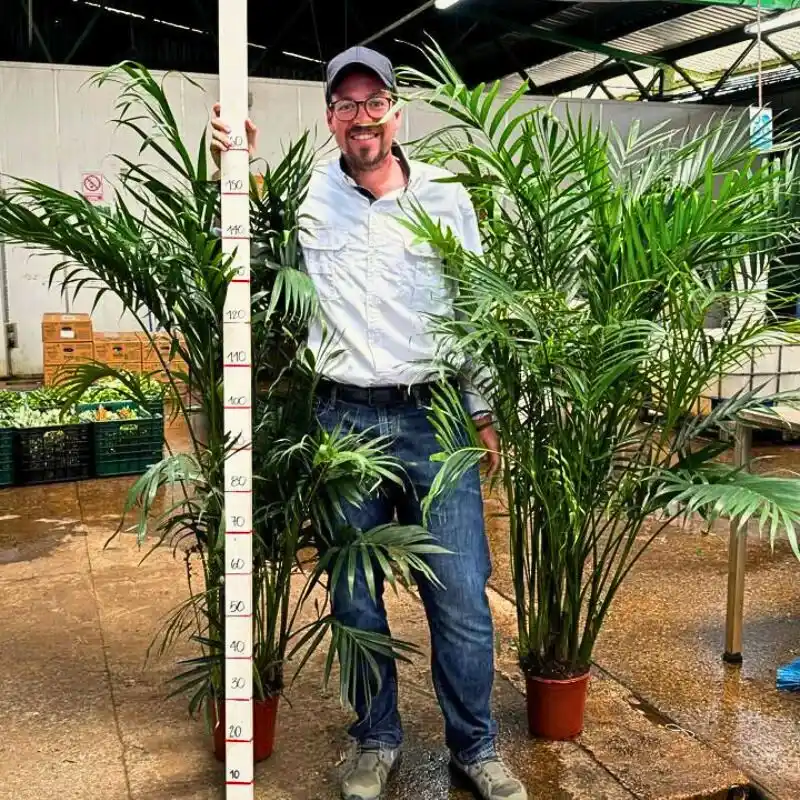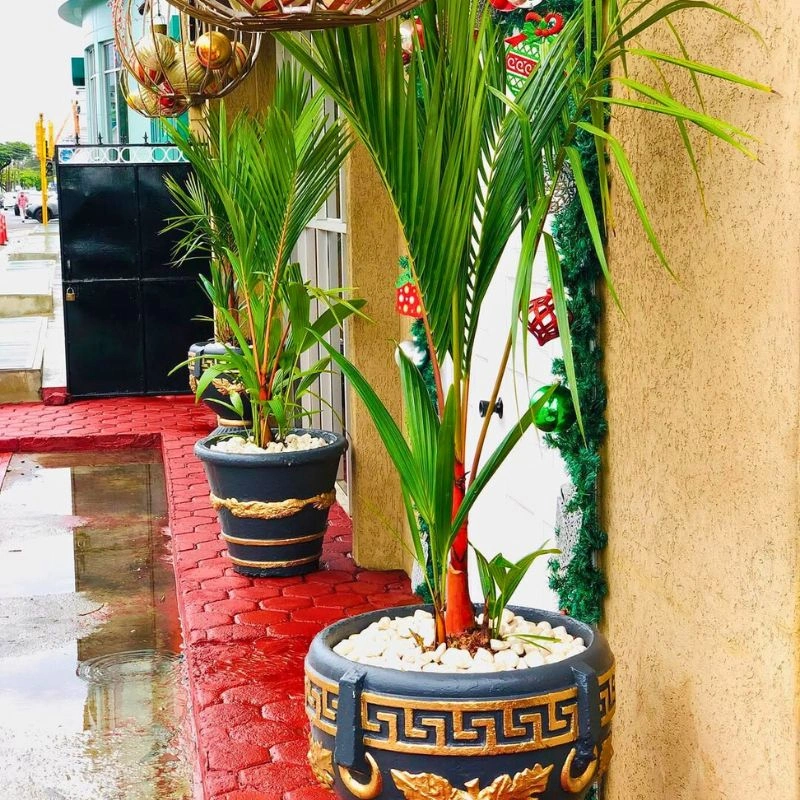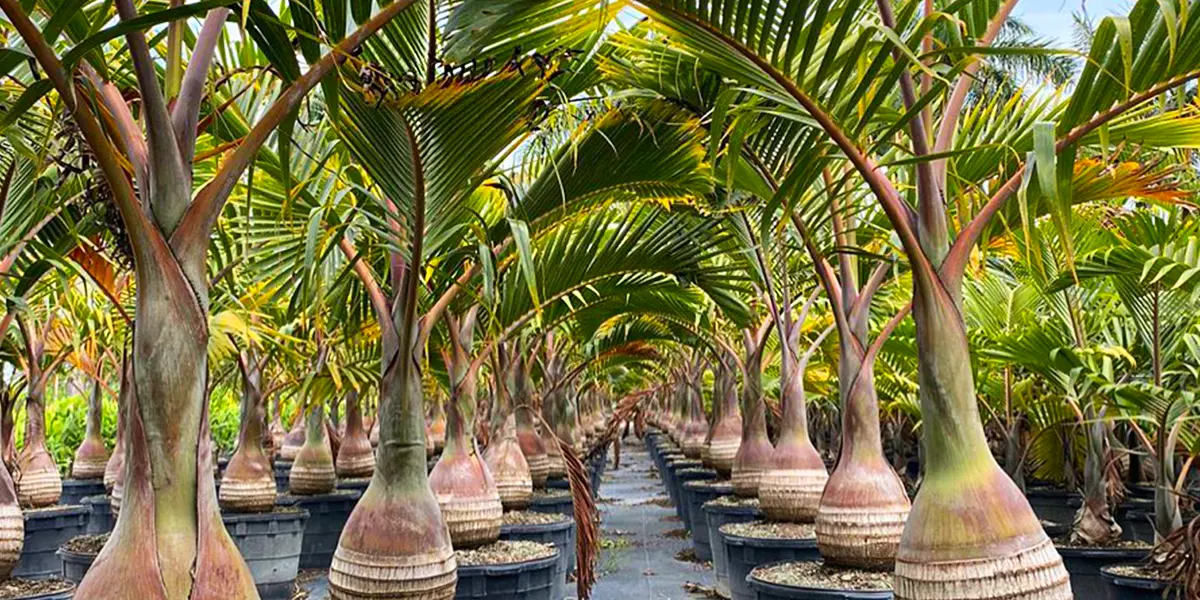The Spindle Palm Tree (Hyophorbe verschaffeltii) is a tropical gem that brings an exotic flair to any landscape. This striking palm gets its name from its uniquely swollen trunk that resembles a spindle, making it a standout in gardens, patios, and even indoor spaces. Its gracefully arching fronds and elegant stature add a touch of paradise, transforming ordinary surroundings into a tropical retreat.
Beyond its visual appeal, the Spindle Palm is admired for its adaptability and low-maintenance care, making it an excellent choice for seasoned gardeners and beginners alike. Whether you're aiming to enhance a coastal-themed garden, create a serene backyard oasis, or elevate your indoor plant collection, the Spindle Palm is a great choice, read on to learn more.
Spindle Palm Trees
Spindle palm trees are slowly growing kind of palm, whether indoors or outdoors. Native to the Mascarene Islands in the Indian Ocean, their name Spindle is a result of the ridges on its trunk that resemble a spindle. Growing to 25 feet (7.6m) tall, when fully mature, and its fronds to a length of 10 feet (3m) these palm trees can effortlessly give you that graceful presence in your landscape.

This palm has a gray trunk, which swells in the middle and narrows up into a smooth green shaft where the leaves start to grow again. Ideal growing conditions in their natural habitats are; well-drained sandy soil, full sun, and water occasionally. Being such a hardy palm, its tolerance to harsh growing conditions is impressive.
You can also read about the 27 palm tree types to choose from and other individual palm trees we have covered like; the Sago palm tree and Foxtail palm tree.
How to Grow Spindle Palm Trees in a Garden
Being a real tropical treat, spindle palm trees thrive in USDA zone 10, on the lowest 9b. However, when it comes to growing this palm tree outdoors, it is crucial to start with the basics. Identify an ideal location, where sufficient sunlight is available throughout the day. Ensure there is sufficient spacing, especially if you have surrounding plants. Spindle palm tree fronds grow to 3 meters wide, so be mindful of this when choosing the location. Maintain a distance of 1-1.5 meters away from the house to accommodate your palm's growth.

Prepare the top soil, or consider a mix of peat moss added to the hole dug, which should suffice. Take your spindle palm plant and replant it into the hole. Refill the hole with soil or peat moss and water sufficiently; be careful not to overwater the plant initially. Hyophorbe verschaffeltii is a striking tropical beauty, so position it well. It can act as a focal point of your landscape, whether at the entrance to your property or within your garden.
Growing Spindle Palm Plants Indoors
Due to its slow growth, spindle palm trees are common as houseplants. Due to its slow growth, this palm tree is a great choice for a container. However, identify a location within your indoor space that has sufficient access to sunlight daily. Spindle palm tree likes to bask, but it is not that thirsty, so keep your watering to a minimum.

Notably, Spindle palm houseplant grows to a height of 6 feet (2m), so ensure that there is enough space to support upward growth. If you are keen to infuse a tropical feel into your indoor spaces, the spindle palm tree should be your go-to houseplant of choice.
Caring for Spindle Palm Trees
Right off the bat, the spindle palm tree is not a fussy palm. It can tolerate difficult conditions, like a prolonged drought and salty water. Unlike other palm trees that can be self-cleaning, Hyophorbe verschaffeltii is not a self-cleaning palm due to its slow-growing nature. Therefore, keep pruning dead fronds from time to time to make them tidy. What are the ideal growing and caring conditions for this palm, you ask? Find a detailed coverage of every required condition to grow a thriving spindle palm tree.
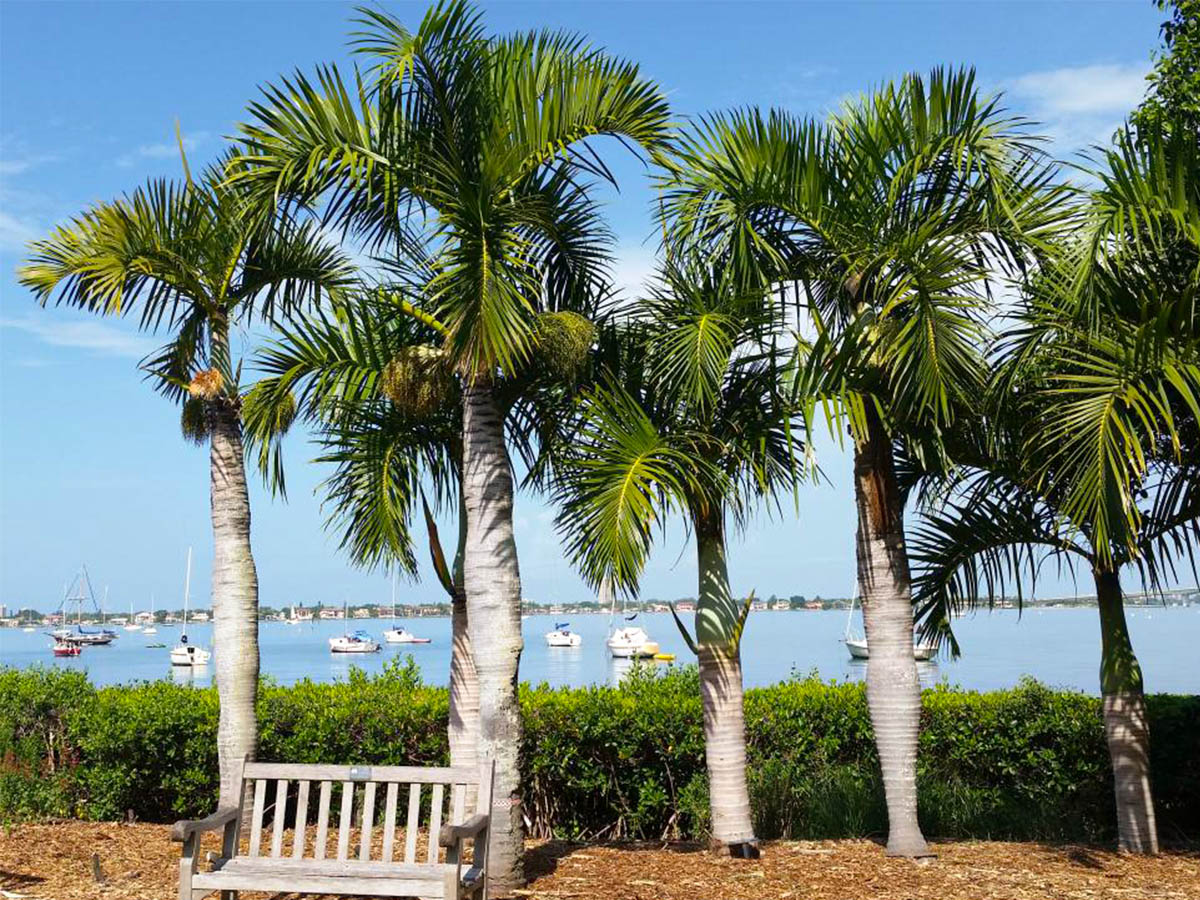
Spindle Palm Tree - Soil Requirements
Due to their coastal origin, spindle palms prefer well-drained sandy soil. It is crucial to grow them in this soil to enhance their growth early on. You can choose to incorporate peat moss, but ensure the medium used can effortlessly drain water to avoid water logging problems.
Spindle Palm Tree - Lighting Needs
It is a no-brainer that the spindle palm is a tropical baby, so it prefers and loves the sun. Whether growing in your garden or outdoors, ensure sufficient sunlight access daily. This will bolster the growth and well-being of your palm tree.

Watering Spindle Palms
Go a little easy on watering your spindle palm plants, it can withstand dry periods, so one a-week watering session should be enough. The danger with overwatering is the crop up of root rooting and eventually death or redundant growth of your palm tree.
Fertilizer Application for Spindle Palms
The most common nutrients required by the spindle palms consistently are: Potassium and magnesium. Insufficient potassium availability leads to orange-colored spots on the fronds. Preferably apply fertilizer with a high potassium ratio during the growing season (spring). To enhance the intake of these nutrients, water sufficiently after the fertilizer application.
Common Pests and Diseases Associated With the Spindle Palm
Mealybugs and scales are the most rampant pests associated with spindle palms. To combat this issue, just wipe the fronds with alcohol wipes. If the pests resist, consider using insecticides to fight them off.

Common diseases include: leaf yellowing, which leads to premature fruit drop and eventual death of the palm tree. Treat with antibiotic remedies but also check on your nutrients and watering, including sunlight exposure. Leaf spotting is also a fungal infestation associated with spindle palm trees, to tackle this challenge apply fungicides and reduce your watering intervals.
Landscape Uses of a Spindle Palm Tree
The spindle palm tree has a graceful presence and tropical flair, which make it a beneficial addition to any landscape. If you are passionate about designing your landscape to complement other properties and items, this palm will not disappoint you.

The following landscaping options can be explored to fully enjoy the beauty of this palm tree; consider using it as an anchor in your garden, position it along the walkway or the driveway to create that focal appeal and an effective first impression to your visitors. Adding it to an empty wall or fence gives character and appeal. In addition to these, you can explore the option of having it as a patio or container plant near the pool or the courtyard.

There are so many landscaping options to explore with the spindle palm tree, all you have to do is to tap into your landscaping creativity.
Header image by @Teruyakumiko and featured image by @plantinsider.


